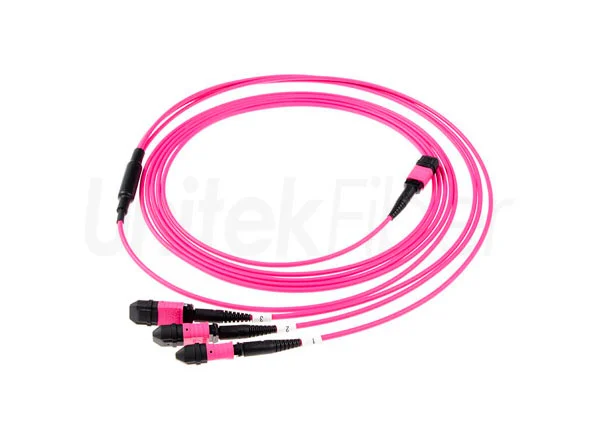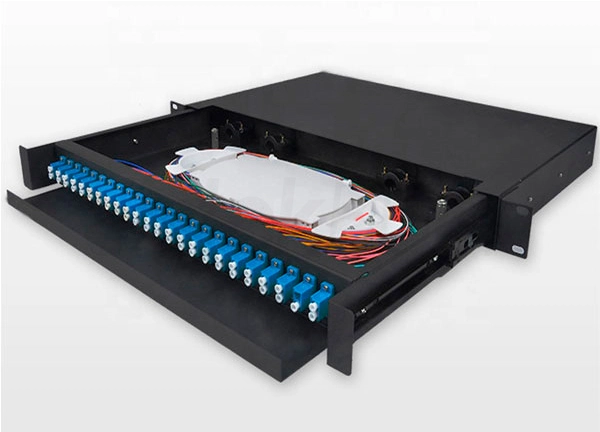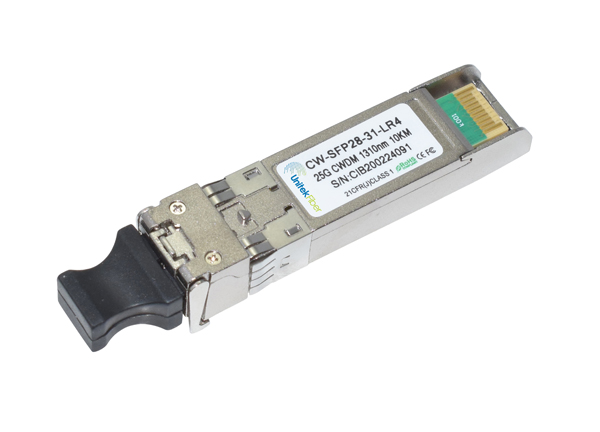
Driven by private cloud, public cloud data centers, and service providers’demand for high broadband, 25G and 100G penetration rates are getting higher and higher, and 200G/400G optical devices have also been produced from 2019, which means that network upgrades have become the inevitable trend of development. So far, most server vendors have begun to provide servers with 25G optical fiber network cards as I/O (input/output) options. The signal transmission rate of Ethernet has been increased from the previous 10G to 25G, 100G or even higher. Although 1G, 10G and 40G currently occupy the main share of the Ethernet port market, the future demand for 25G and 100G will be stronger than ever, because high bandwidth is undeniably pushing the data center to higher The direction of scalability and flexibility is developing. This article will focus on comparing 10G to 40G-100G and 10G to 25G-100G network upgrade paths to help users provide better path selection for network upgrades.
Although 100G and higher speeds are the next important milestones for ultra-large-scale data centers, 40G may still exist on the market. The three-tier data centers of traditional enterprises have low density requirements and limited budgets, so they can directly implement 40G network upgrades on the basis of 10G.
Network Upgrade path from 10G to 40G-100G
The 10G-40G-100G network upgrade path is mainly to use the previously deployed 10G equipment and wiring system to upgrade the network. 40G is realized through 4*10G parallel channels, and 100G is realized through 10*10G parallel channels. Since the network upgrade path is based on a 10G single channel implementation, a large number of optical fiber jumpers are required during deployment, resulting in more complicated wiring and higher costs. At the same time, when you want to achieve long-distance transmission. 40G QSFP+ optical transceiver modules (such as 40G QSFP+ LR4 optical transceiver modules) need to use wavelength division multiplexing technology to integrate 4*10G channels into one connection for transmission.
Network Upgrade path from 10G to 25G-100G
Data centers are expanding at an unprecedented speed, driving the need for higher bandwidth between servers and switches. In order to cater to this trend, the access network has been gradually upgraded from 10G to 25G, which is also the connection between servers and ToR switches. Provides high-density, low-cost and low-power solutions.
Network Upgrade path from 10G to 25G -100G Compare with the path from 10G to 25G-100G
Before the release of the 25G Ethernet standard, the network upgrade method of data centers such as enterprises and operators generally used 10G to 40G. With the official release of the 25G Ethernet standard, the 25G-100G network upgrade method was low-cost and low-power consumption. Advantages such as high density and high density have gained more applications and promoted the rapid development of 100G Ethernet.
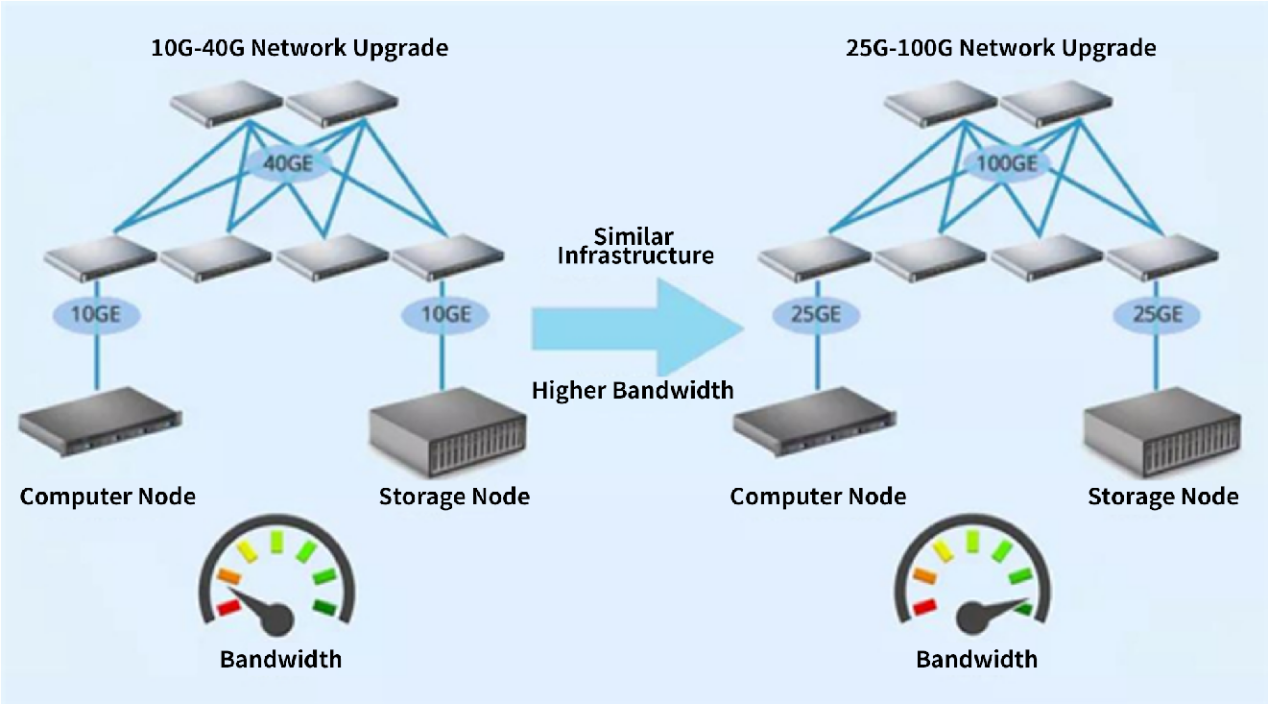
After comparison, it can be found that the Network Upgrade from 10G to 25G-100G has obvious advantages over the Network Upgrade from 10G to 40G-100G network upgrade path, which is embodied in the following three aspects: The 10G to 25G-100G network upgrade path can effectively save capital expenditure and operating expenditure. Different from 40G, 25G is an upgraded version of 10G.
It has the same design as 10G. It has a reusable wiring infrastructure to achieve seamless upgrades, effectively avoiding expensive and complex wiring system changes. The 10G to 25G-100G network upgrade path has lower power consumption. The single-channel 25G SerDes technology used in the 25G-100G connection is similar to the single-channel 10G SerDes technology used in the 10G-40G connection, but its performance is increased by 2.5 times, effectively reducing the power consumption and cost per gigabit. This means effectively reducing the cooling requirements and operating expenses of the data center.
The 10G to 25G-100G network upgrade path has a higher port density. Compared with the 10G to 40G-100G network upgrade path, the 10G to 25G-100G network upgrade path provides a lower unit bandwidth cost by making full use of switch ports. Therefore, the cost of upgrading directly from 40G to 100G is higher than that of upgrading from 25G to 100G the cost of.
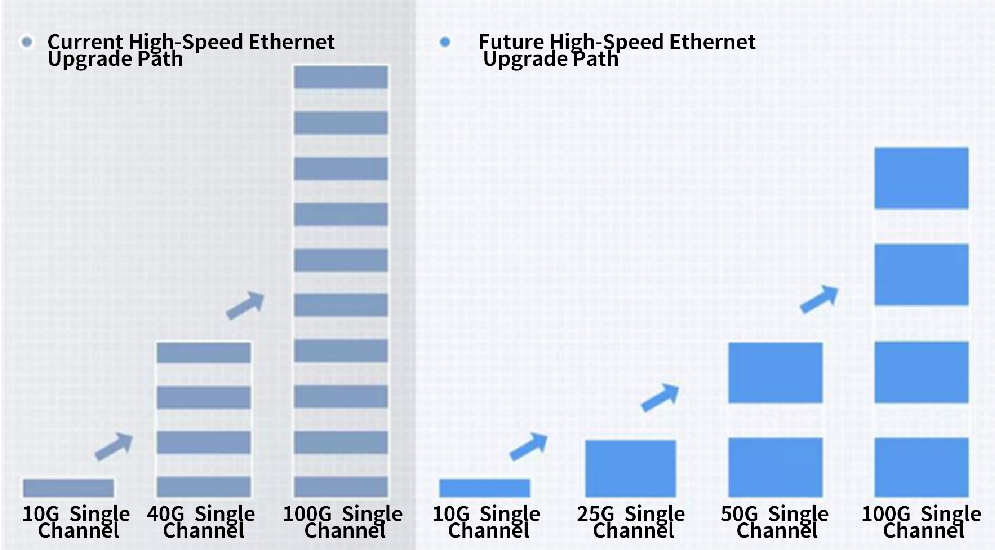
Suggestions for 100G network upgrade
When planning network upgrades, attention should be paid to the scale of business and future network expansion.
For industry-leading giant companies, upgrading from 25G to 100G is the best way. Because 25G has obvious advantages, it can meet the growing network demand. In addition, some large enterprises and large-scale data centers are willing to pay high costs in exchange for high-performance network systems in order to ensure network availability and meet long-term development requirements.
For some small and medium-sized enterprises, there is no need to abandon the 40G currently deployed and eager to pursue 100G. Because the equipment (such as servers) in the current network does not necessarily support 25G, in this case, you need to replace the optical transceiver modules and cables used in the network equipment and wiring, which will increase the network cost. In short, choosing a 10G to 25G-100G network upgrade path may mean paying additional fees. If the current network can meet your existing needs and the budget is limited, it is recommended that you keep the existing 40G and then upgrade the network on this basis. However, if you are planning to optimize the network architecture or deploy a new network, considering the future business development and the development trend of Ethernet, it is recommended that you choose 10G-25G-100G.
Conclusion
The demand for higher speed and performance in future data centers will never stop. Looking back on the evolution of 25G in the past few years, you will find that the emergence of 25G is a milestone in the expansion of next-generation data center network bandwidth and channel capacity. The 25G-100G network upgrade has subverted the traditional 10G-40G network by providing higher bandwidth and port density, reducing power consumption and cost, improving the efficiency of the data center, and laying a solid foundation for the 200G/400G upgrade. But no matter which path you choose to upgrade the network, it depends on the actual situation. Therefore, the network administrator can give priority to some reference before making a choice.

